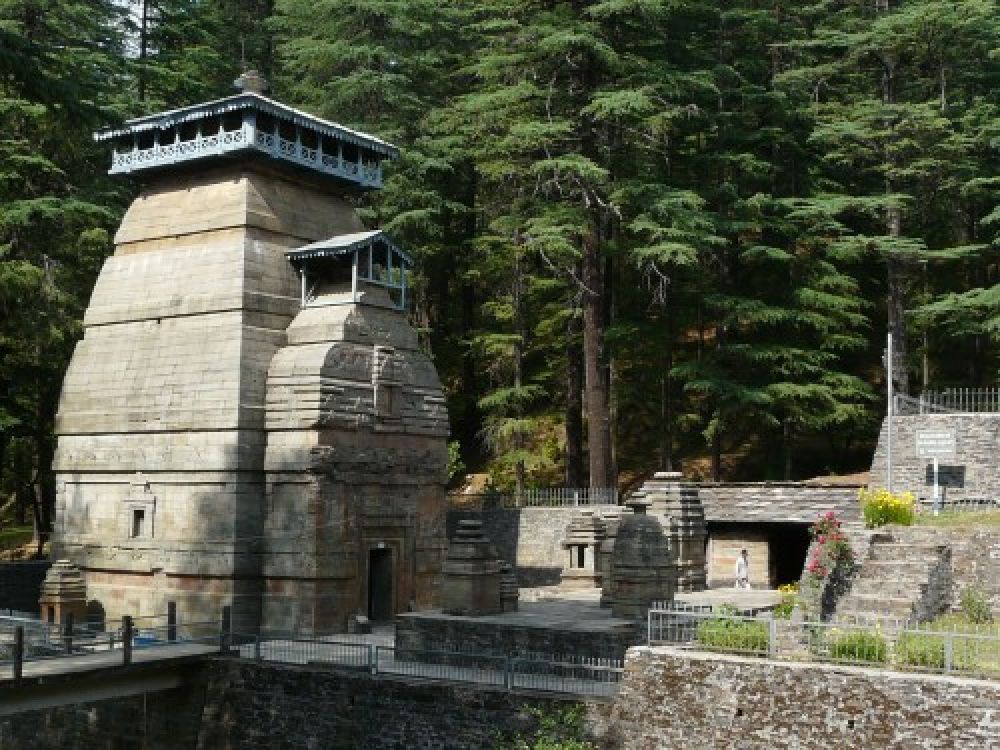

The Dandeshwar Temple, located in the serene Jageshwar valley of Uttarakhand, India, is among the oldest and most sacred Hindu pilgrimage sites. Dedicated to Lord Shiva, this temple complex is a confluence of spirituality, art, and nature. Dating back to between the 7th and 14th centuries, Jageshwar's temples serve as a remarkable testament to the ancient temples architecture typical of the Kumaon region.
The history of tourism at Dandeshwar Temple is steeped in the rich tapestry of Indian heritage. For centuries, it has been a significant center for spiritual learning and an important destination within the Kumaon pilgrim circuit. The temple has attracted sages, seers, and devotees seeking divine blessings and spiritual solace.
Surrounded by dense deodar forests and with the Jata Ganga river flowing nearby, Dandeshwar Temple's ambiance is both tranquil and majestic. The setting is believed by locals to be the abode of God and a place where the divine manifests itself in natural beauty. Myths and legends flourish here, with many believing that Jageshwar is the eighth Jyotirlinga, where Shiva resides as a natural lingam.
Despite its ancient roots, tourism in Jageshwar, including the Dandeshwar Temple, has seen significant changes in the past few decades. With the advent of better road connectivity and the push from the Uttarakhand tourism board, Jageshwar has become more accessible to a broader audience. Modern amenities and accommodation facilities have encouraged an influx of not only religious tourists but also trekkers, historians, and international visitors eager to explore India's ancient past.
The latest tourism trends indicate an increase in eco-tourism and sustainable travel. Visitors are drawn to the natural splendor and often engage in bird watching, short forest hikes, and meditation retreats. The Archaeological Survey of India (ASI) now protects the temple complex, and efforts have been made to preserve both the natural environment and the cultural heritage of this sacred place.
Tourism at the Dandeshwar Temple peaks during the festivals of Maha Shivaratri and the annual Jageshwar Monsoon Festival, when thousands of pilgrims converge here to perform elaborate rituals and offer prayers. During these times, the temple is a riot of colors, sounds, and collective devotion.
It is important to note that with the increasing number of tourists, the importance of responsible tourism is paramount to maintaining the sanctity and beauty of Dandeshwar Temple and its surroundings. Emphasis is placed on preserving the cultural landscape while accommodating the needs of tourists.
When planning a visit to Dandeshwar Temple, it's advised to be respectful of local customs and traditions. Dress conservatively and be prepared for the temperate but sometimes unpredictable mountain weather. Good times to visit are from April to June and September to November, when the climate is most pleasant.
In conclusion, the Dandeshwar Temple stands not just as a monument of devout significance but also as a beacon for heritage tourism in Uttarakhand. The evolving tourism dynamics point towards a continued appreciation and growing interest in the sacred sites nestled in the Himalayas, promising a sustainable future for these ancient testaments of faith.